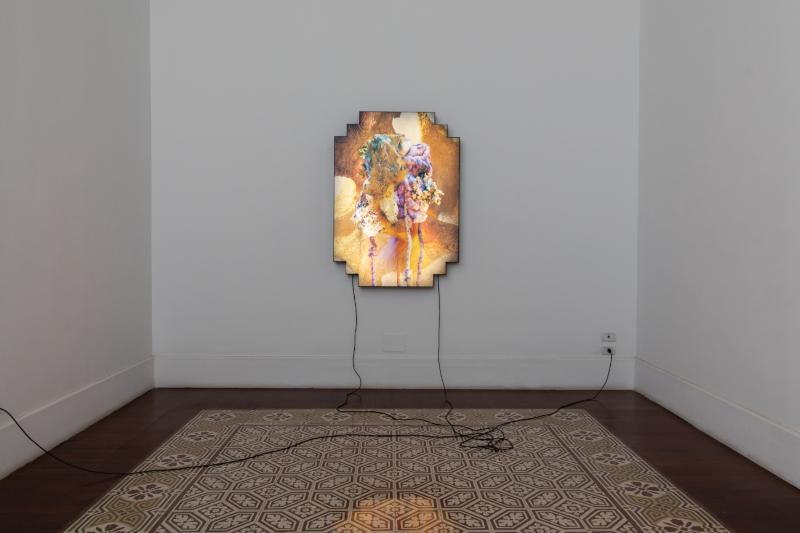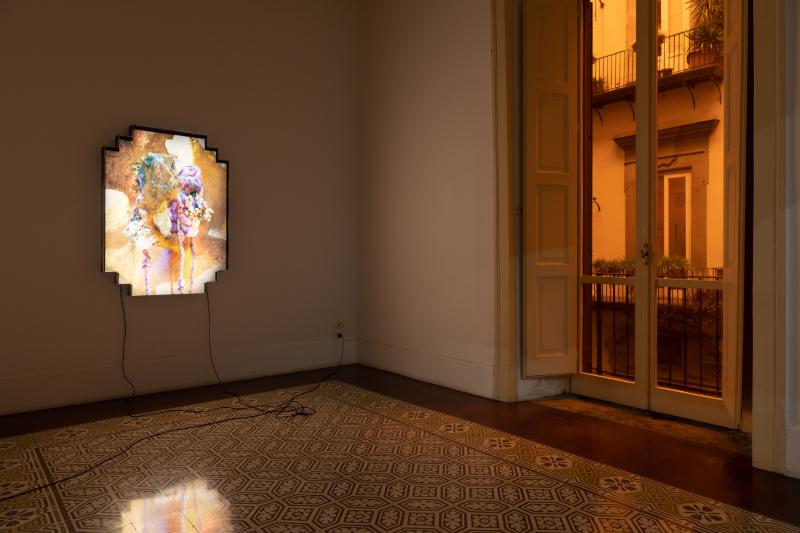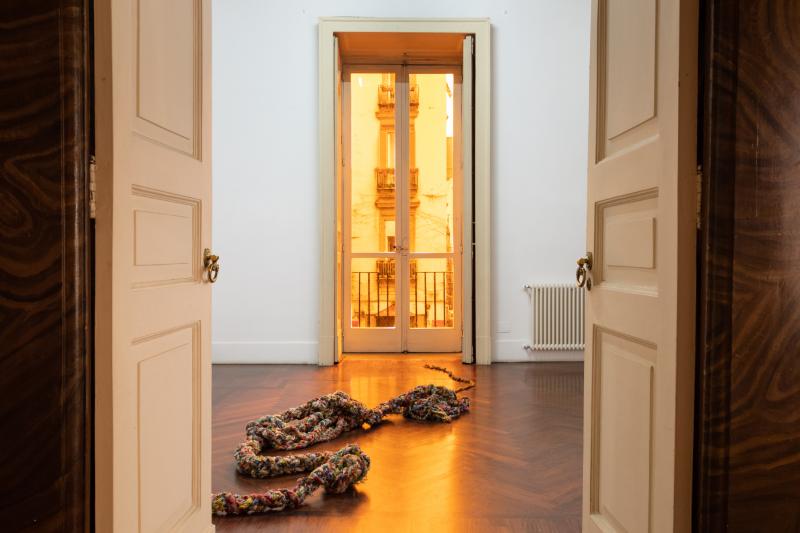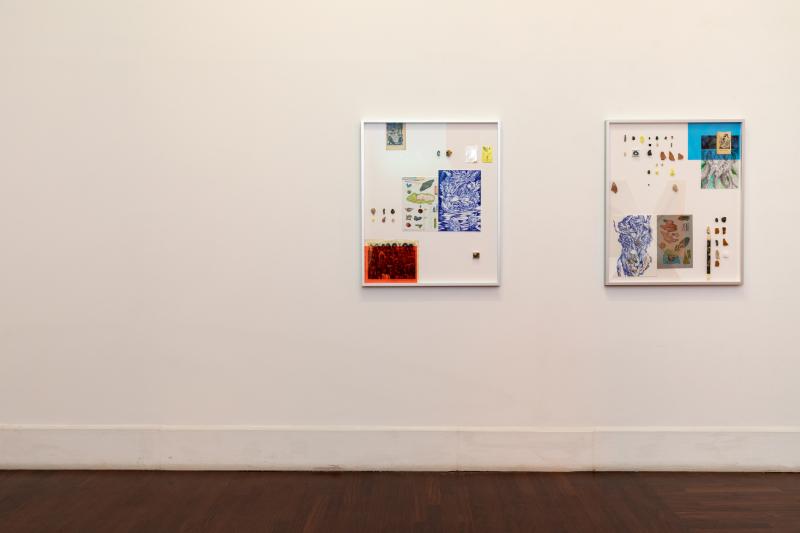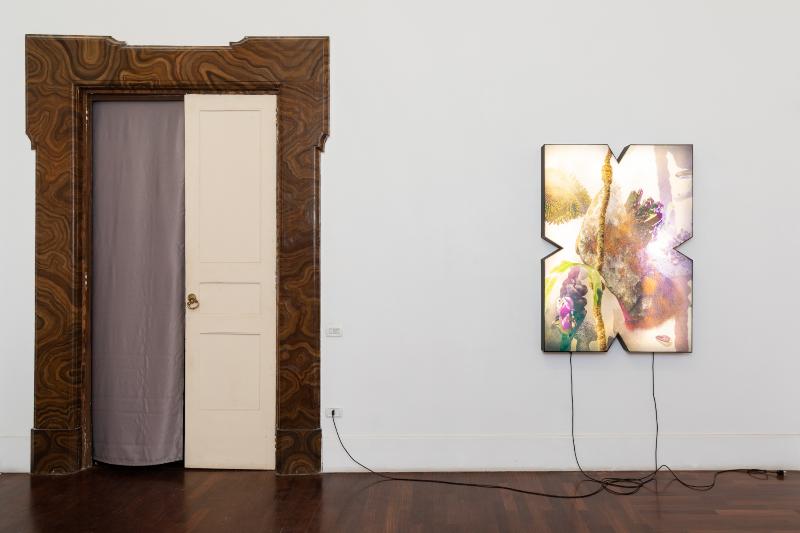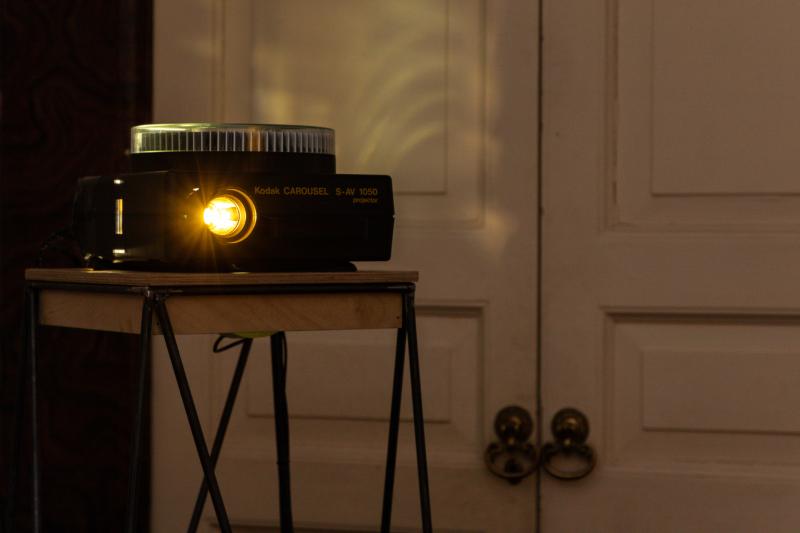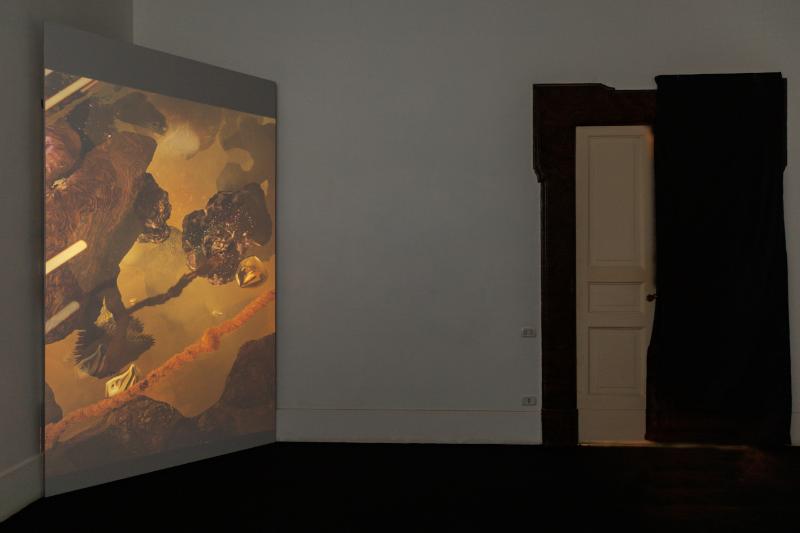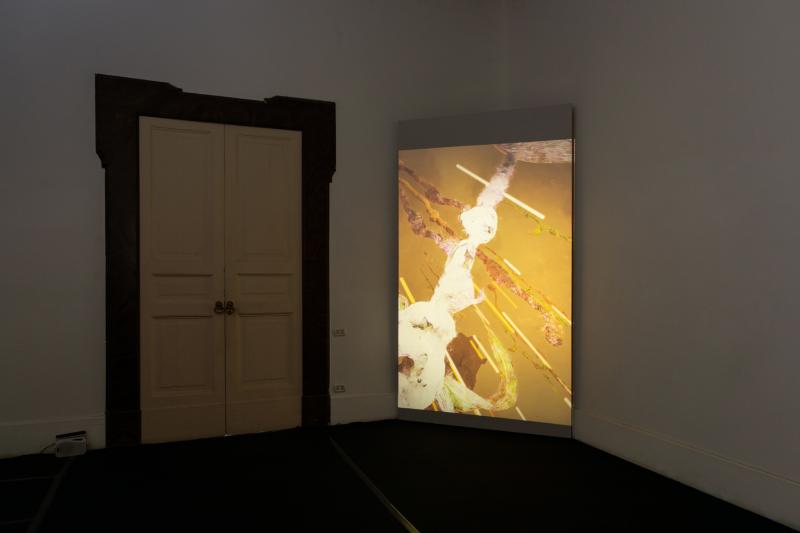from 06/10/2021 to 20/11/2021
Galleria Tiziana Di Caro will be hosting “A Breathing Mountain”, the first solo exhibition in its spaces by Oscar Santillán (Ecuador, 1980), curated by Alessandra Troncone and opening on Wednesday 6 October 2021 at 19:00.
Oscar Santillán’s work encompasses science, language, history, and certain anthropological aspects connected with the artist’s Ecuadorian roots. The media he uses are many: photography, video, video installation, writing, sculpture. His artistic practice is bound by the concept of “ANTIMUNDO”, an approach that mixes scientific research, sci-fi elements and decolonial attitudes in search for models of thought in addition to Western modernity. To achieve this, Santillán focuses on themes, tools and forms of knowledge that have been forgotten or deliberately repressed in the past, which he recovers turning them into and analyzed the subject of specific artistic investigations, carried out with the support of researchers and scientists, in an ever-changing input network. The study of the cultural and scientific heritage of Latin America is part of this context, in a quest for ‘endemic technologies’ that suggest new ways of looking at reality, in an understanding of science that is not based only on phenomena-linked data but also on the invisible and sensory.
“A Breathing Mountain” includes works conceived specifically for this exhibition and created in the last two years. The title is taken from “The Andean Information Age”, a book published in 2020 following the conversation between Oscar Santillán and Alessandra Troncone and their respective cross-searches on the mysterious items of 'quipus'. Quipus are artifacts formerly used by the Andean civilizations which, by means of cords and knots and depending on their arrangement and color, were used in accounting. However, other uses of the quipus are also known, ranging from the funerary to astronomical predicting, up to what are thought to be “literary” quipus, capable of containing actual messages. These items also strongly attracted Raimondo di Sangro, Prince of Sansevero (Torremaggiore, 1710 – Naples, 1771) who, in his “Apologetic Letter” (1750) in which he discusses the thesis according to which language is as old as man, was the first scholar in Europe to attempt a decoding of this archaic system of communication, starting from an Andean manuscript which by chance arrived in his hands in 1744.
This connection between Peru and Naples has thus produced the exhibition “A Breathing Mountain”, a journey that starts from the quipus to trace in the ancient pre-colonial civilizations the possibility of interpreting our present time, suggesting new ecologies and social structures. In this sense, another key to access the exhibition is the concept of ‘huaca,’ a Quechua term with which the Incas defined places, objects and living beings they saw as sacred, and which rejects an absolute and final definition, to the point that the Spanish colonizers, in an attempt to ban all the huacas from their kingdom – as they had already done with the quipus in 1583 – tried to collect them in a list but failed to find a univocal definition that would allow their identification and thus destruction. Elusive entities, endowed with conscience and subjectivity but embodied in an object, a mineral, a natural locations (the ‘breathing mountain’ of the title), the huacas outline the possibility of sentient organisms that question every anthropocentric logic, just as the quipus offer a synesthetic reading that combines textual element, visual input and tactile approach, in contrast to any writing system typical of the European context.
The works on exhibition tell of these hybrid encounters between language and sensory experience, ancestral contents and contemporary technologies, the animal and plant world, the organic and mechanical, in the form of drawings and light boxes that contain images elaborated by the artist, ambiguous both in the form and the technique used to create them. A sculpture made of intertwined textile elements (“Codex. A Thousand Years of Nonlinear History”) recalls the quipus, but features as assortment of fabrics that come from different eras and geographical contexts, woven together to suggest the absence of any hierarchy between material cultures and a non-linear but potentially circular and infinite history, made up of unexpected grafts and connections.
Finally, the installation entitled “The Andean Information Age” presents the contents of the book with the same name in the form of a story, told using a hacked slide projector which transforms the sequence of images into a film where each shape seamlessly flows into the next, tying up the history of the quipus with many possible parallel stories.
Oscar Santillán (born 1980, in Ecuador) is a visual artist who lives between The Netherlands and Ecuador. In 2011 he received his MFA in Sculpture from VCU—Virginia Commonwealth University, in the US, and consequent fellowships have allowed him to be an artist-in-residence at Skowhegan (US), Jan van Eyck (NL), Ratti Foundation (IT), Delfina Foundation (UK), and Leiden Astronomical Observatory (NL). More recently, he has been one of the igniters setting ‘órbitat’ in motion, a platform for the encounter of art, science, and technology in Latin America.
Santillan's solo exhibitions include: MUAC Museum, Mexico City, MX; Witte de With Center for Contemporary Art, Rotterdam, NL; Copperfield, London, UK; Fundación ODEON, Bogota, CO; Spazio Calderara, Milan, IT; Château La Borie, Solignac, FR; among others.
Group shows include LACMA, Los Angeles, CA; Yokohama Triennial 2020, Yokohama; NRW FORUM, Düsseldorf; SongEun Art Space, Seoul; Museum Voorlinden, Wassenaar; Zadkine Museum, Paris; FRAC Île-de-france, Paris; IMMA—Irish Museum of Modern Art, Dublin; Ballroom Marfa, Marfa, TX; Rochechouart Musée d’art contemporain, Rochechouart; Kroller-Muller Museum, Otterlo; Museo de Arte Carrillo Gil, Mexico City; Museo de la Universidad Nacional, Bogotá; Centraal Museum, Utrecht; Socrates Park, New York; among others.
Oscar Santillán is among the artists choosen by the Holt / Smithson Foundation to develop its first artistic commission: The Island Project: Point of Departure.
